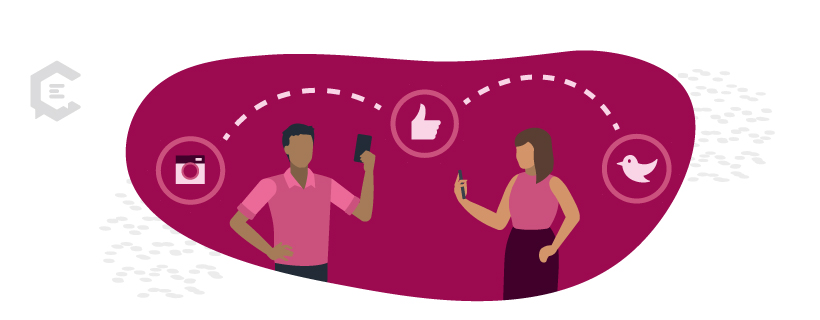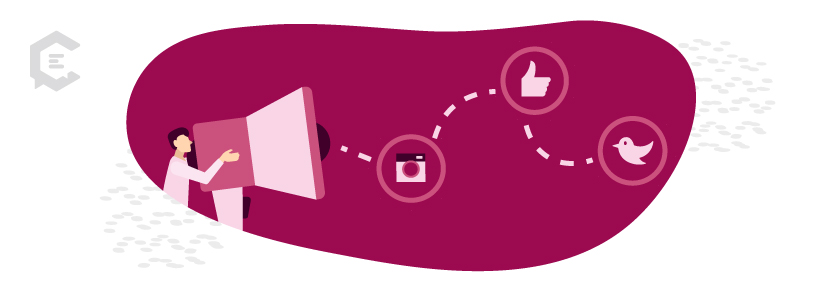What is a social epidemic? A social epidemic refers to ideas, products, and behaviors that spread rapidly through a population in the way that a virus spreads.
In his 2000 debut book, ‘The Tipping Point,’ Canadian journalist and staff writer for The New Yorker Malcolm Gladwell discusses the social epidemic concept.
Particularly now, it’s a relevant, easy-to-visualize analogy. Much like a health pandemic, a social epidemic is a marketing strategy that relies on the power of virality.
When a company discusses its desire to ‘go viral’ on the internet, they’re hoping to create a social epidemic reaching millions. Sometimes, this happens with luck, near-perfect timing, or the right type of relationships and connections.
Other times, it’s executed through a variety of efforts from content marketers and experts. Here, we explore the concept of social epidemics, as well as guidance on how to set your clients up for success in this competitive arena:

What is a social epidemic?
A social epidemic refers to ideas, products, and behaviors that spread rapidly through a population in the way that a virus spreads, according to Kelly Chase, the director of brand, content, and communications for the popular photo decor company Fracture.
“This population could be a specific niche or a community, but with the ever-increasing connectivity fostered by social networks and internet culture. Or, the population could be much larger — and much like a true epidemic, these viral moments have the potential to break through and become a part of our larger cultural awareness and dialogue,” she explains.
What’s tricky about strategizing to create a social epidemic is that they are often unpredictable and, seemingly, come out of nowhere. Then, suddenly, overnight, exponential growth happens, creating a viral buzz that pays back in dividends.
Chase says many factors contribute to this possibility, but in most cases, they’re fielded by a fortuitous combination of the following:
- A ‘sticky’ idea. Sticky ideas are generally simple, unexpected, credible, and impactful.
- Finding champions with the right audience, like influencers, journalists, and other game-changers.
- The right context and timing.
As an example, Chase says sea shanties are a recent social epidemic that the internet is loving. If you’re unfamiliar, this is when one person begins singing one part of a song (like the bass), and then other people join in for different parts, ultimately creating a virtual video choir.
You can think of it as ‘Pitch Perfect’ but on TikTok.
“Seas shanties are extremely sticky in that they are simple, non-pretentious, and they create a sense of connection and community because the more people participate, the more fun it is,” Chase explains. “The collaborative nature of TikTok made it the perfect place for sea shanties to thrive, and influential accounts quickly gave them a signal boost.”
Why you should tread carefully with starting a social epidemic
Going viral is great, right? After all, who doesn’t want to be internet famous? Though, in theory, it’s beneficial to brands, it should come with a few precautions, urges Christopher Tompkins, the CEO and the head strategist for The Go! Agency.
Like a virus that spreads quickly, a social epidemic can create many ramifications for companies if they aren’t prepared to meet the surge in demand that often comes from virality.
A classic example is the brands featured on the television show ‘Shark Tank’ who see a surge in traffic and orders and then don’t have the supply to meet it.
“These could be more demand than supply, a loud negative company image, widespread disengagement of your target audience with your company,” he shares. “While there are positives, I think of viruses being infectious, so make sure you are monitoring your brand to make sure you manage this groundswell properly and wield its power correctly for your brand.”
To prepare for a social epidemic, Tompkins says to ensure you’re ready for the effects of the campaign on your infrastructure:
- Is your website able to handle the traffic?
- Do you have the team to monitor the campaign response properly… and quickly?
- Do you have enough people to answer the phones?
- Do you have enough stock to fill orders?
- What is your plan B if there is any fallout? These campaigns are more than just throwing out something disruptive and waiting for the windfall.

How to create a social epidemic
Create a campaign.
It happens way too often for Tompkins: a company contacts him and says, ‘I want to go viral.’
However, as with most aspects of developing a successful business, you can’t just want something to happen; you need to create the blueprints to make it a reality.
To do this, Tompkins says creating a campaign that reaches a broad audience on various platforms is essential. Most importantly, there needs to be an idea around the movement that has the power to disrupt, infect and resonate. “Lots of thought, planning, and budgeting need to go into this effort. While some are lucky by going viral out of the blue, 98 percent of the world are not as lucky,” he reminds.
Prioritize social listening — and move quickly.
Social listening is exactly how it sounds: the ability to tune in to your audiences on social media channels and your website. Without having a pulse on what your followers are saying, how they’re reacting, and what’s happening in the greater world, you will miss all social epidemic opportunities.
Chase says anyone who spends time on Twitter is familiar with the idea of the ‘main character of the day.’ In short, it’s usually someone with at least a moderate social following and some level of influence who tweets something, and it becomes the main point of conversation on Twitter for the day.
“Whether it’s Bean Dad or the guy who claims to have found shrimp tails in his Cinnamon Toast Crunch, the commentary that builds around these shared social moments often spills over to other platforms and even into the national media,” she says.
“Marketers who want to harness these shared conversations need to be ready to jump on them as they are happening in real-time — and respond to them in a way that is authentic and interesting.”
Harness the power of influence.
Influencers often seem like shiny, golden things: they make a living off promoting products and document it through glamorized photos. In reality, they do live up to their name since they can influence their followers’ buying decisions.
However, not everyone is ethical, and Chase says it’s vital to research quality influencers who make sense within your industry. While they will charge for their promotions, it could be worth exploring if they have a proven track record with paid content.
Tompkins also says not to discount the value of your supporters. aka your customers.
“Once you cement your campaign, you need to mobilize the troops. Reach out to any past customer, supporter, or connection who will be willing to spread your message via their own channels,” he adds.
Don’t go too niche.
For content to truly go viral, Jamie Hardin, the CEO and founder of GreenLit Marketing, says it needs to appeal to the masses.
“Test your ideas on your family, neighbor, or friends that aren’t experts in your industry. If they look at you funny, maybe your content needs to be revised so you can better appeal to a broader audience,” she explains.
Focus on these three pillars.
For marketers looking to replicate viral content, entrepreneur and marketing expert Kristina Libby says there is a theory by artist and creative thinker Makimoto Fujimura that’s helpful to keep in mind. He believes that movements occur because of three pillars:
- Creative ideas
- Financial support
- Political willpower
When Libby first founded the Floral Heart Project, a COVID-19 memorial effort that grew viral over the fall and winter, she added these three elements and saw increasing growth.
She created a visual concept, 1-800-Flowers.com supported financially and organizationally, and COVID support groups joined with political willpower.
“What we need is more integration, which means companies need to reduce their instance on being the sole beneficiary of their viral content,” she shares. “Content does best when it is actually social, and it is viral only when it helps to support more than your brand.”
Be realistic.
Lastly: Don’t set your sights too high. Or, more importantly: never promise virality to a client. As Chase says, the reality is that creating a social epidemic is probably not realistic for most marketers.
“Finding the perfect balance of idea/product, influence, and context is extremely tricky and often relies on a certain amount of kismet for a marketing moment to rise to the level of a social epidemic,” she continues.
However, that doesn’t mean that it’s not something to aspire to: “To be successful in today’s world, marketers need to understand how ideas can break out of our digital lives’ constant noise and gain traction,” she adds.



